Asheville council debates downtown bike lanes proposed for College, Patton. What's next?
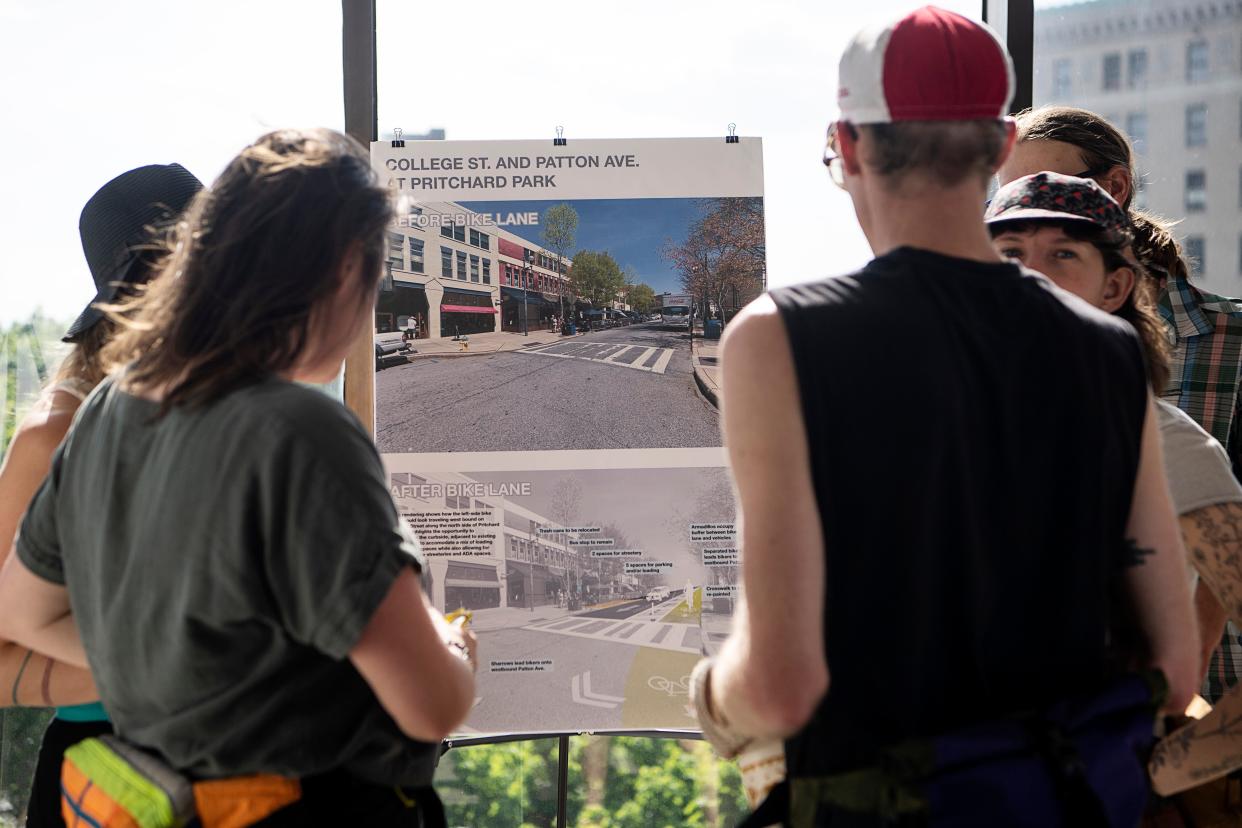
ASHEVILLE - Proposed bike lanes in the heart of downtown Asheville, a keystone project intended to connect the city's growing cycling network along portions of College Street and Patton Avenue, were brought before City Council Aug. 22, not for the first time, for what Mayor Esther Manheimer described as a "temperature check."
But when a routine presentation turned into a strained hour of back-and-forth, punctuated by murmurs from an incredulous crowd, Manheimer told city staff, "I think we're giving you a pretty chaotic temperature."
As the downtown project was hotly debated, conversation seemed to expand from the single issue of College/Patton bike lanes and called into question the city's various plans and policies around the very concept of multimodality, like its "complete streets" policy, which was adopted in 2012, and directed city planners and engineers to design city streets to enable safe access for all users, regardless of mode.
"You might have just talked yourselves into a work session," said Manheimer. Council had spent the afternoon in a different two-hour work session and was midway through what would become another five hour meeting.
It's been a year-and-a-half since the project was first publicly proposed, intended to add buffered bike lanes on College Street between Spruce Street and Pritchard Park and on Patton Avenue between Pritchard Park and Biltmore Avenue, a nearly half-mile stretch. Since then, the city said there has been extensive public engagement, including an April public open house, virtual stakeholder meetings, news releases, various stops at boards and commissions, in-person walking tours, radio interviews and an emailed survey.
Adding bike lanes would require one lane of vehicle travel to be removed on each roadway, in most places taking the road down to a single vehicular lane.
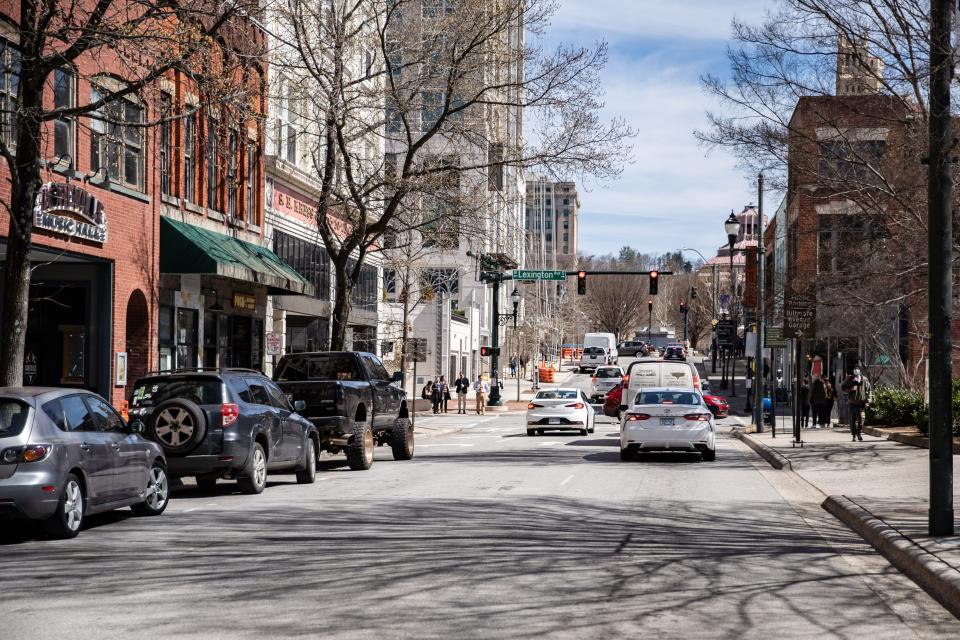
More: Merrimon Avenue? College & Patton? What are the city's plans to expand its biking network?
What are the concerns?
Since the proposal, people have decried impacted loading zones and loss of parking, while also raising concerns around traffic, public safety and access to downtown businesses along the central corridor, notably a critical east/west connection through the city.
It has also garnered support from many in the city, including area cyclists.
As the presentation was delivered as part of the manager's report, there was not an opportunity for immediate public comment on the item at the Aug. 22 meeting. People interested in speaking were asked to wait until the general public comment portion at the end of the meeting.
Many of the would-be speakers did not make it to the end of the five hours. Though nearly 25 people initially signed up (these speakers could have been there for any host of topics, not just the proposed bike lanes), only one person remained to speak on the bike lanes by meeting's end.
The speaker, Patti Glazer, an Asheville architect who lived in Asheville and worked downtown for over 40 years, and whose business is located along the impacted corridor, said that none of the businesses along the route were in favor of the proposed design.
“Keeping the curb-to-curb width of the street as well as traffic signals as is, while converting one lane to a dedicated bike lane, leaves both College and Patton with only one lane of moving traffic. Clearly not viable for this city’s main east/west arteries in the city’s business district," Glazer said.
“Complete Street policy is a great goal, however it does not fit everywhere. One needs to look at the repercussions of forcing such a solution where it physically doesn’t fit."
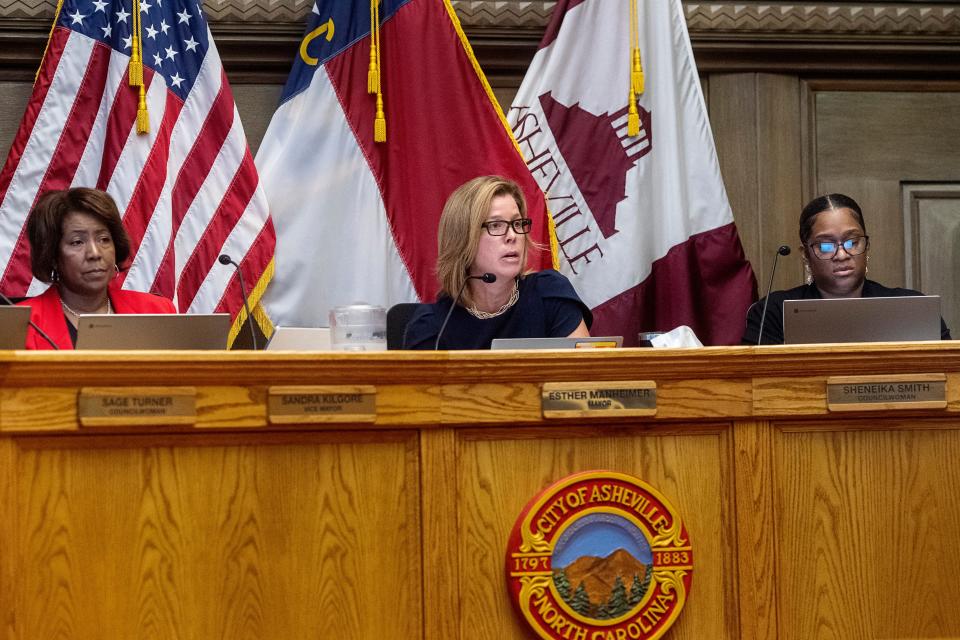
Why here?
Jessica Morriss, the city's assistant director of transportation, delivered the Aug. 22 report to council. No vote was on the table that evening. Instead she was seeking input prior to the next stage of the project: issuing a bid in October. As planned, council would not vote on the project until considering the installation contract, possibly in January.
It is already budgeted in the city's approved Capital Improvement Plan, and is a relatively "low-cost, high-value" bicycle facility, as no road expansion is needed, considered a "quick build."
Existing city plans directly call for more bike facilities in the Central Business District and citywide. Plans/policies that support the project, she said, include:
2009 Downtown Master Plan
2012 Complete Streets Policy
2016 Asheville in Motion Mobility Plan
2018 Living Asheville Comprehensive Plan
Morriss stressed the way the project would tie into existing and planned bike facilities and greenways — the missing link in a larger network, providing connectivity through downtown where currently there is none.
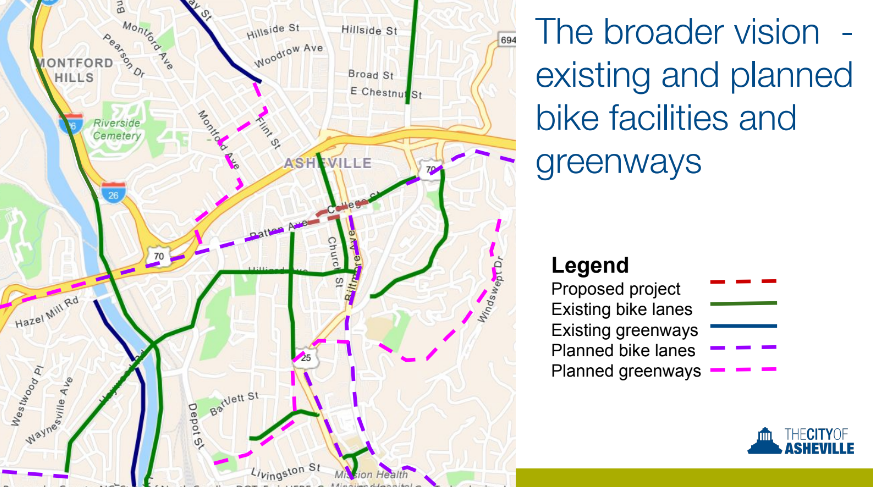
Council concerns from some members were wide-ranging, just as support was from others, and when conversation snagged on why bike lanes couldn’t be added only on the outside of the city, instead, Morriss said the idea that cyclists don’t want to ride next to cars, and would rather take a more “indirect route” is a common misconception.
Rather, she said, most bicyclists want to use the same roadways that every other mode uses.
“You look at our streets in downtown and they don’t connect. ... They end in random places. This is literally the only road that connects straight through east/west. For a car network and a bike network and a transit network these are the routes that get all modes through one side of Asheville to the other,” Morriss said of the stretches of Patton Avenue and College Street.
“This project isn’t seeking to take away anything. There are still going to be cars, there is still going to be transit, there is still going to be parking, there is still going to be loading.”
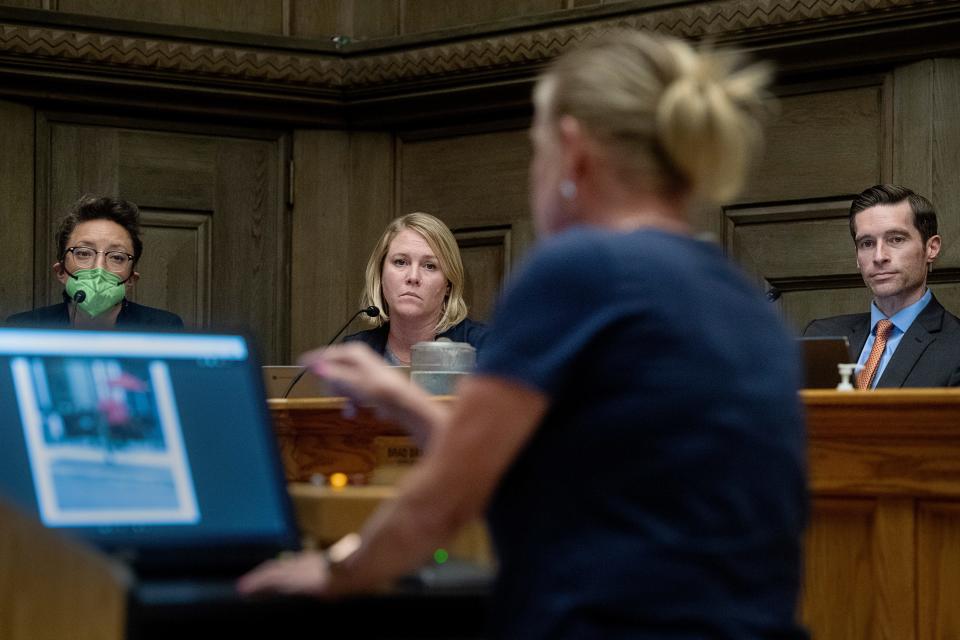
Council member Maggie Ullman, liaison for the Multimodal Transportation Commission and a former member before she was elected to council, said data shows that there is a reduction in crashes and collisions when streets are slower, “and that is a safety design in this.”
“You would never build a road for cars with a half a mile missing,” Ullman said. “And we do that for pedestrians and bicycles all the time.”
Council pushback
Vice Mayor Sandra Kilgore was one of the strongest opponents of the project, as proposed.
“I’m not against multimodal transportation ... But I’m saying what they’re doing here, to me, does not make sense for this community ... it disrupts the whole city," she said.
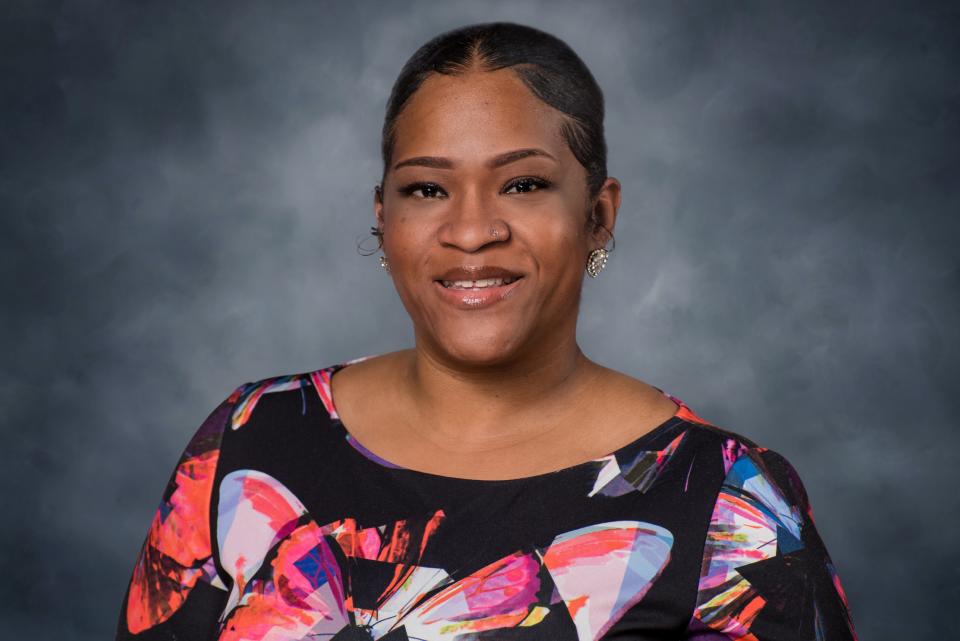
She and others reiterated concerns heard from area business owners. Council member Sheneika Smith said more stakeholder engagement is necessary, particularly when some felt they were only being told about the project as if it was final, not offered a chance to make tangible change.
Council member Antanette Mosley, later backed by Kilgore, said within "countless" church services, cookouts and birthday parties in Black communities, she had heard no appetite for bike lanes, which she said some have likened to "white encroachment in Black neighborhoods."
“I want to bring a voice to those people," Mosley said. "Sometimes what’s best for Asheville, theoretically, is harmful to the most vulnerable among us.”

Councilmember Sage Turner said she was concerned the conversation around bike lanes would overshadow other efforts downtown, like the city's ongoing Downtown Safety Initiative.
“I want to hear that it won’t stop or impede any of these much more dire needs around cleanliness and safety,” she said.
Addressing top concerns
Revisions have taken place throughout the process, Morriss said. Though one lane would be removed, the current design, which recommends left-side separated bike lanes, keeps the right turn lane at signals. Her presentation offered responses to "top concerns:"
Not enough loading areas, deliver trucks block lane: Approximately 130 feet of new loading area is proposed to be added with the project, and no loading zones are being removed.
Parking loss, parking is unavailable: Seventeen metered parking spaces are proposed to be removed, nine of which would be converted to loading zone area. No ADA parking spaces would be removed. Rankin, Harrah's Cherokee Center and Coxe Avenue parking garages are all within .1 mile of the project corridor.
Traffic congestion will increase: Existing traffic volumes average 4,000 to 6,000 vehicles per day, "well within the thresholds for single lane streets," Morriss said.
Fire and Police won't be able to get through: Asheville Fire Department has indicated that they do not have concerns with the project, she said, and the bike lane is wide enough that emergency vehicles can use it if the regular traffic lane is blocked.
Next steps
In a Aug. 23 email, Morriss told the Citizen Times that based on council discussion, namely how the project fits in with other priorities for the fiscal year and that the effort would not take time and resources away from other “key initiatives” downtown or negatively impact area business owners, staff is meeting internally to develop recommendations on the best path forward.
Those plans will then be discussed with City Council. The specific format has not yet been determined for that conversation, be it a work session, agenda briefing or otherwise.
More on bike lanes: Is there room in downtown Asheville for less parking, more bike lanes? Residents weigh in
Other Asheville City Council action: Panhandling ordinance amendments pass 1st council vote; More restrictions could be coming
Sarah Honosky is the city government reporter for the Asheville Citizen Times, part of the USA TODAY Network. News Tips? Email shonosky@citizentimes.com or message on Twitter at @slhonosky. Please support local, daily journalism with a subscription to the Citizen Times.
This article originally appeared on Asheville Citizen Times: Downtown bike lanes coming to Asheville? City Council debates topic

